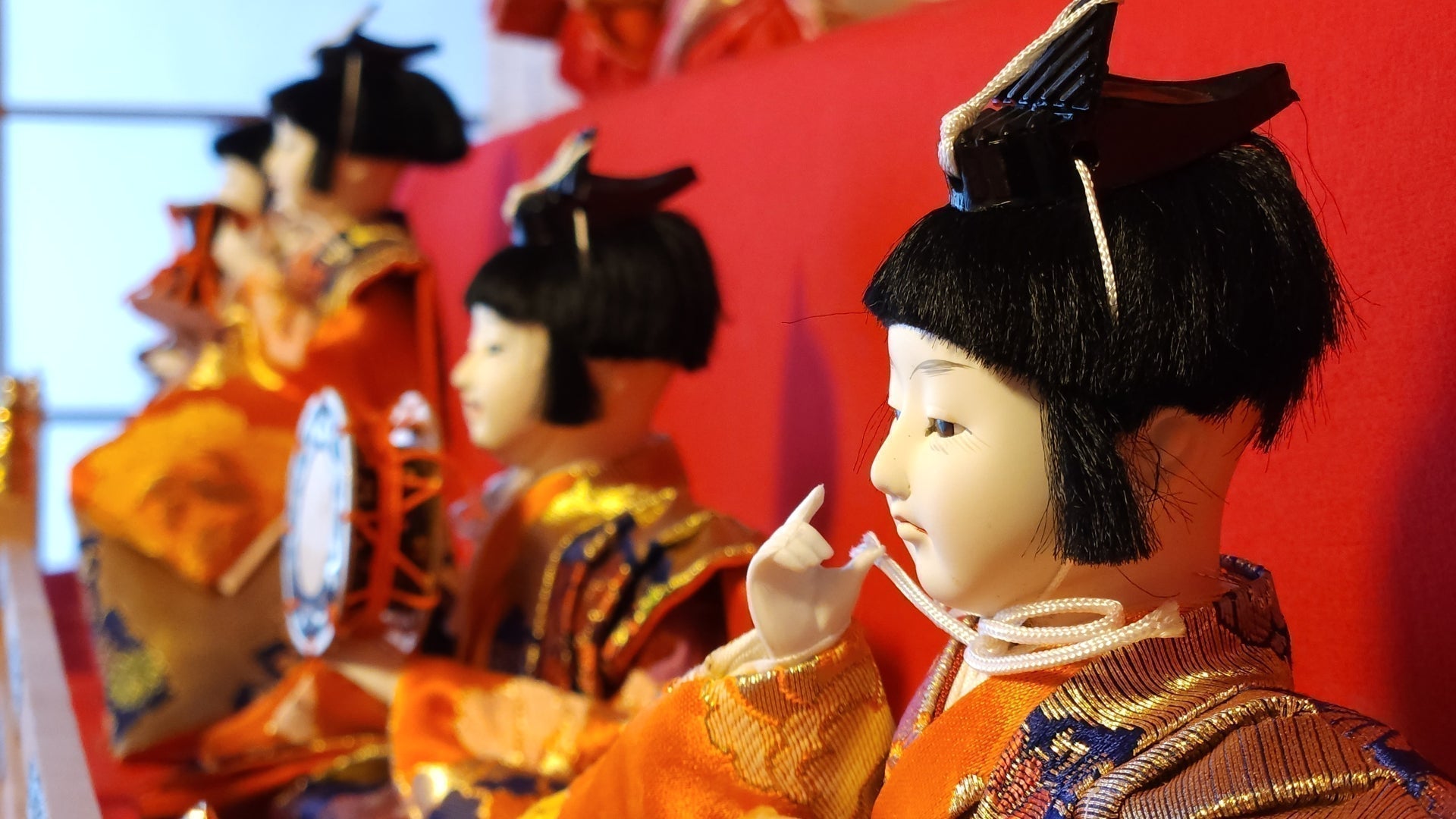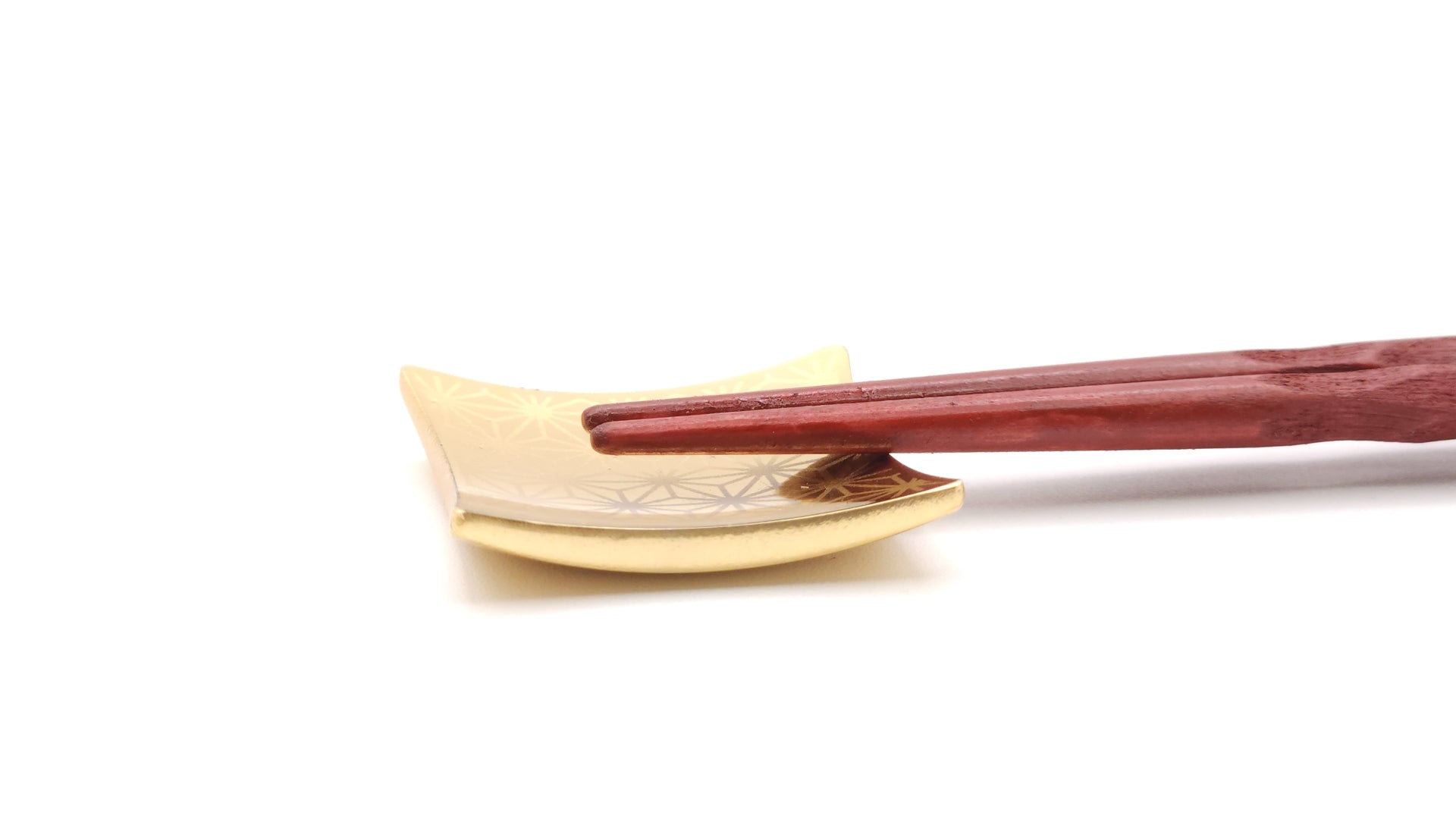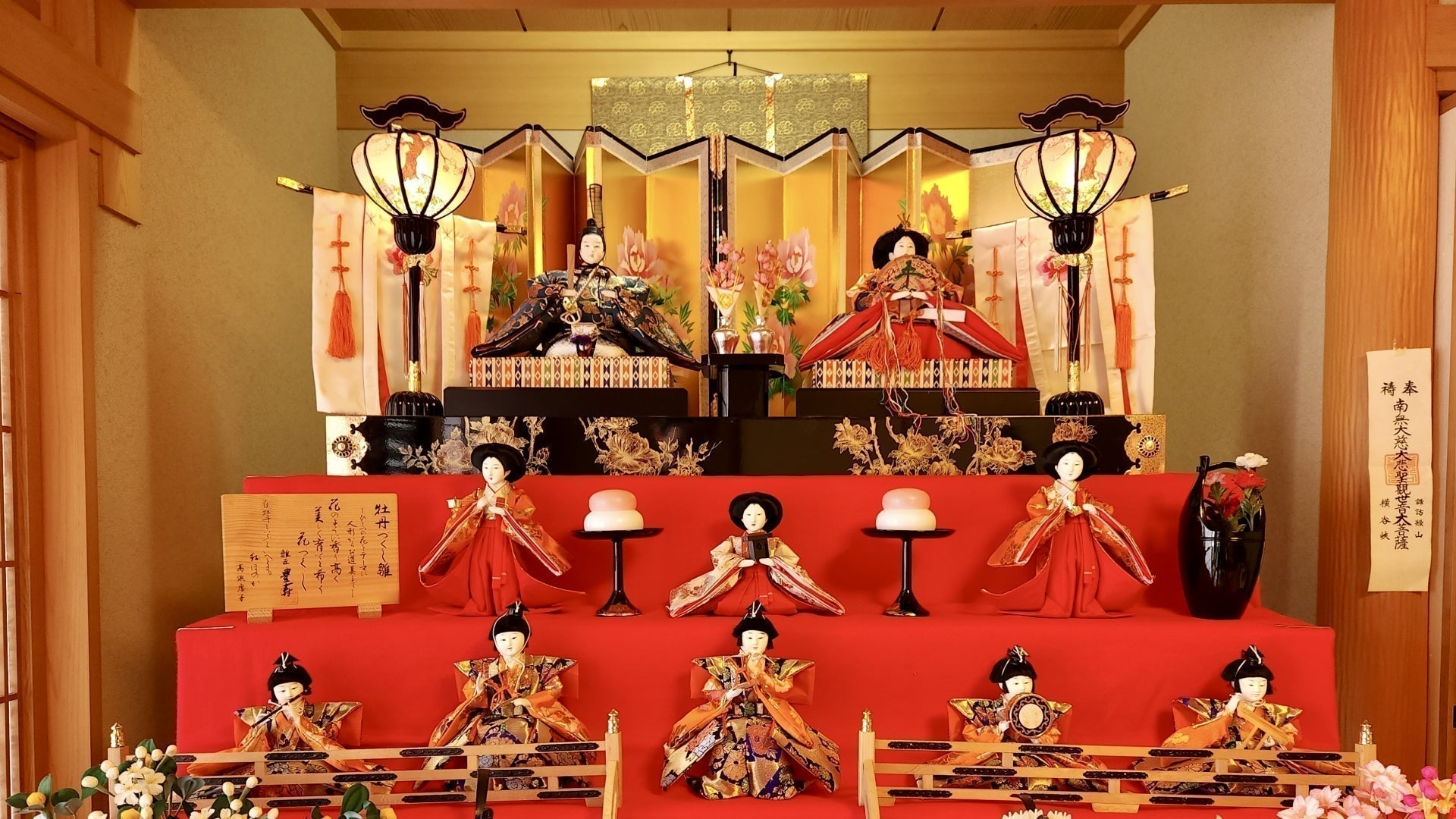
What Is Hinamatsuri? The History and Origins of Japan’s Doll Festival
Every year on March 3rd, households across Japan celebrate Hinamatsuri, also known as the Doll Festival or Girls' Day.
This elegant and colorful tradition, featuring beautifully arranged dolls and festive displays, has a history stretching back over a thousand years.
- The History and Evolution of Hinamatsuri
- From Rituals to Festival Traditions
- Formalization During the Muromachi and Edo Periods
- Hinamatsuri as a Festival for Girls
- The Flourishing of Hina Dolls
- Challenges and Revival in the Modern Era
- A Tradition That Endures
- A Celebration of Family and Tradition
- FAQ: Understanding Hinamatsuri
But how did a simple purification ritual evolve into a cherished annual celebration?
This article takes you on a journey through time, exploring the deep cultural roots of Hinamatsuri, from its ancient origins to its transformation into one of Japan's most beloved festivals.
The History and Evolution of Hinamatsuri
Hinamatsuri (雛祭り), like many Japanese festivals and traditions, has deep-rooted origins in ancient China.
When it made its way to Japan, it mixed with aristocratic traditions and gradually turned into a beloved doll-playing event for young girls. What began as an elegant pastime for noble families during the Edo period eventually spread to samurai households and even to everyday townsfolk.
 Handmade Hina Dolls (雛人形) on display at an exposition in Kusatsu, Shiga, Japan. Courtesy of LTIJ (Little Things in Japan - Instagram page).
Handmade Hina Dolls (雛人形) on display at an exposition in Kusatsu, Shiga, Japan. Courtesy of LTIJ (Little Things in Japan - Instagram page).
Over time, it transformed into the vibrant, girl-centered celebration we know today… but let’s proceed in order. Let’s start with the origin.
Ancient Origins in China
Understanding the roots of ancient traditions and folklore can be a bit tricky. The further back we go, the blurrier the lines become, making it easy to get lost in old texts and scattered records. But don’t worry, I’ll break it down as simply as possible, so stick with me.
The origins of Hinamatsuri (雛祭り), can be traced all the way back to the Zhou Dynasty in China (周朝, Zhōu Cháo, 1046 BCE–256 BCE). Back then, people practiced a series of purification rituals, washing their hands and feet in natural water sources and using orchid grass to cleanse themselves of impurities and ward off misfortune.
As centuries passed, these customs evolved.
By the time of the Han Dynasty (汉朝,Hàn Cháo, 206 BCE–220 CE), the rituals had expanded to include feasts and riverside prayers for future generations. The practice continued to develop, and after the Three Kingdoms period (三国, Sānguó, 220–280 CE), it took on a more formal shape, becoming known as the Shangsi Festival (上巳节, Shàngsì Jié) or the Double-Third Festival (三月三, Sānyuè Sān), celebrated on the third day of the third lunar month.
Still with me? Hang in there, this next part is the key to understanding why Hinamatsuri is celebrated on March 3rd.
In both Chinese and Japanese, the characters 三月三 can be read as… March 3rd.
See where this is going?
So this is the tradition that eventually made its way to Japan, evolving into the festival we know today.
Lets go on…
The Development of Hinamatsuri in Japan
During the Kofun period (古墳時代, Kofun Jidai, c. 300–538 CE) and Asuka period (飛鳥時代, Asuka Jidai, 538–710 CE), Japan’s close ties with China played a significant role in both the spread and evolution of the purification rituals previously mentioned.
One notable practice involved crafting human-shaped paper dolls called hitogata (人形), breathing on them, and rubbing them against the body to symbolically transfer misfortune before setting them afloat in rivers.
This ritual, known as Nagashibina (流し雛, "floating dolls"), is considered an early influence on Hinamatsuri and became even more widespread during the Nara period (奈良時代, Nara Jidai, 710–794 CE).
While Nagashibina is still performed today, it did not directly evolve into the modern festival but rather influenced its evolution, eventually becoming an integral part of its tradition.
By the mid-Heian period (平安時代, Heian Jidai, 794–1185 CE), purification rituals held in early March became more formalized as a way to pray for health and safety. Onmyoji (陰陽師, yin-yang diviners) were summoned to offer prayers to the deities of heaven and earth, while seasonal foods were presented as offerings.
As part of the ritual, people used human-shaped effigies (hitogata, 人形) to transfer their misfortunes before sending them into rivers or the sea, an act closely tied to the Nagashibina tradition.
From Rituals to Festival Traditions
As rituals merged with doll play, Hinamatsuri evolved into the Jōshi Festival, laying the foundation for the modern Doll Festival.
Hina-asobi and Aristocratic Play
Around the same time, a form of play called Hina-asobi (雛遊び) emerged among aristocratic girls.
The term Hina (雛) referred to small dolls, and the activity involved playing with miniature figures made of paper, along with scaled-down representations of palaces and household items.
This form of pretend play is even referenced in two of Japan’s most famous literary works: The Tale of Genji (源氏物語, Genji Monogatari) by Murasaki Shikibu and The Pillow Book (枕草子, Makura no Sōshi) by Sei Shōnagon.
The Jōshi Festival in the Heian Period
Over time, these purification rituals merged with Hina-asobi, giving rise to the Jōshi Festival (上巳の節句, Jōshi no Sekku, meaning "Festival of the Day of the Snake"), the direct predecessor of Hinamatsuri.
However, despite this merging, dolls remained symbolic tools for purification rather than decorative elements. The festival's core focus remained on ritual cleansing and offerings.

A full seven-level Hinamatsuri setup at a traditional Japanese house in Maibara, Shiga, Japan.
Formalization During the Muromachi and Edo Periods
The official recognition of the Jōshi Festival (by the way, “Joshi -上巳” here refers to Third Day of the Third Lunar Month associated with the Chinese zodiac sign of the snake) is believed to have occurred during the Muromachi period (室町時代, Muromachi Jidai, 1336–1573).
At this stage, it was still primarily a purification ritual, a tradition that continued through the Azuchi-Momoyama period (安土桃山時代, Azuchi–Momoyama Jidai, 1568–1600), with no significant shift yet toward the decorative doll festival we recognize today as Hinamatsuri.
Following the chaos of the Sengoku period (戦国時代, Sengoku Jidai, "Warring States Period"), Japan entered a long era of peace and stability under the Edo period (江戸時代, Edo Jidai, 1603–1868). It was during this time that Jōshi no Sekku gradually evolved from a purification ritual into a celebration focused on women.
Imperial Palace Celebrations
A major turning point in the evolution of the festival came in 1629 (寛永6年, 6th year of the Kan’ei era), when a grand celebration was held at the Kyoto Imperial Palace.
This event coincided with Princess Meisho's (明正天皇) ascension to the throne following the abdication of her father, Emperor Go-Mizunoo (後水尾天皇).
Since empresses regnant in Japan were not permitted to marry, her mother, Tokugawa Masako (徳川和子), is said to have arranged a display of dolls portraying Meisho in a blissful marriage, symbolizing happiness and prosperity.
Edo Castle and the Spread of Doll Displays
Around the same time, the custom of doll displays and festivities gained popularity within the Ōoku (大奥, "Great Interior"), the secluded women’s quarters of Edo Castle, where the wives and concubines of the ruling shogun resided. From these elite circles, the tradition gradually spread beyond the aristocracy, reaching common townspeople and even rural communities.
The festival continued to evolve, and by 1687, it was officially named Hinamatsuri (雛祭り), solidifying its identity as a celebration of dolls and girlhood that remains cherished in Japan today.
Hinamatsuri as a Festival for Girls
During the Edo period, Hinamatsuri shifted into a celebration of girlhood, marked by Hatsuzekku and bustling doll markets.
Hatsuzekku and the Celebration of Girlhood
Initially, the festival was not exclusive to young girls but was observed more broadly among women. However, during the mid-Edo period, it began to take on its modern form. The concept of Hatsuzekku (初節句), or a baby girl’s first seasonal festival, emerged as a way to celebrate newborn daughters, further shaping the event into a festival of girlhood.

The Festival of Dolls (Third Month). Woodblock print; ink and color on paper by Ishikawa Toyomasa , Edo period (1615–1868). The MET Museum.
Doll Markets and Popular Festivities
As its popularity grew, doll markets (Hinaichi, 雛市) flourished in Edo (modern-day Tokyo), particularly in areas such as Nihonbashi Jukken-dana (日本橋十軒店, now Muromachi) and Asakusa Kayachō (浅草茅町, now Asakusabashi).
These bustling markets not only provided families with beautifully crafted dolls but also contributed to the festival’s lively and festive atmosphere, making it a cherished annual event.
The Flourishing of Hina Dolls
As the festival gained popularity, artisans crafted increasingly elaborate and luxurious Hina-ningyō (雛人形, Hina dolls) and Hina-dōgu (雛道具, Hina accessories).
These exquisite creations became prized family heirlooms, passed down through generations. However, their growing extravagance led the shogunate (幕府, Bakufu) to issue repeated edicts prohibiting excessive luxury, attempting to curb the trend.
Details of Hina-dōgu (雛道具, Hina accessories)
Challenges and Revival in the Modern Era
With the dawn of the Meiji era (明治時代, Meiji Jidai, 1868–1912), Japan underwent sweeping modernization, adopting Western-style national holidays while many traditional seasonal festivals were abolished or declined in prominence. Hinamatsuri was among those affected, but customs deeply woven into daily life rarely disappear entirely.
Over time, these traditions saw a revival, continuing to hold a place in Japanese culture.
A Tradition That Endures
Even today, Hinamatsuri remains a cherished cultural event, celebrated across Japan as a symbol of family, heritage, and tradition.
Like other seasonal celebrations such as Tango no Sekku (端午の節句, now Children’s Day) and Tanabata (七夕, the Star Festival), it has endured the test of time, connecting modern Japan to its rich historical past.
From its origins as an ancient purification ritual to its evolution into a festival of dolls, Hinamatsuri reflects centuries of cultural transformation, a reminder of how traditions continue to adapt while preserving their essence.
A Celebration of Family and Tradition
Beyond its historical significance, Hinamatsuri remains a deeply cherished tradition that brings families together across Japan. The careful arrangement of Hina dolls, known as Hinakazari (雛飾り), is not just a decorative custom but a heartfelt activity shared across generations.
Parents and grandparents take pride in displaying the dolls for their daughters, passing down cultural knowledge and family traditions while fostering a sense of connection to Japan’s rich heritage.

Unpacking of Hina-ningyō (雛人形, Hina dolls) during the Hinakazari at a traditional Japanese Home in Maibara, Shiga Japan.
The beauty and meaning behind Hinakazari are deeply symbolic, with each element carrying its own history and significance. To dive deeper into this beautiful display, including its traditional setup and the meaning behind each tier, check out the full guide on Hinakazari (雛飾り).
FAQ: Understanding Hinamatsuri
Curious about the meaning, origins, and customs of Japan’s Doll Festival? These quick answers explain the history, traditions, and symbols of Hinamatsuri in a simple, easy-to-read way.
What is Hinamatsuri?
Hinamatsuri, or Doll Festival, is a Japanese tradition held on March 3rd. Families display Hina dolls to pray for the health, happiness, and prosperity of girls.
Why is Hinamatsuri celebrated on March 3rd?
The date comes from ancient Chinese rituals held on the third day of the third lunar month. Japan adopted this custom, and it evolved into Hinamatsuri on March 3rd.
What are Hina dolls?
Hina dolls are ornate figures dressed in traditional Heian court attire. They are displayed befor and during Hinamatsuri on tiered platforms, symbolizing prayers for daughters’ well-being and future happiness.
What is the meaning of Hinamatsuri dolls?
The dolls act as protectors, believed to absorb misfortune and ensure a bright future for young girls. Their arrangement reflects history, tradition, and family bonds.
What foods are eaten during Hinamatsuri?
Typical dishes include chirashi sushi, clam soup, hina-arare rice crackers, and sakura-mochi. Each food has symbolic meaning, from good fortune to protection and long life.
More on Hinamatsuri food here.
Is Hinamatsuri still celebrated in Japan today?
Yes. Families across Japan continue to celebrate by arranging Hina dolls, sharing festive foods, and teaching children the cultural meaning of the festival.
What is Nagashibina?
Nagashibina is an older custom linked to Hinamatsuri. Paper dolls are floated down rivers to carry away misfortune, symbolizing purification and renewal.
How has Hinamatsuri changed over time?
Originally a purification ritual, Hinamatsuri evolved through aristocratic play, imperial customs, and Edo-period traditions into today’s festival centered on girls and family celebrations.



